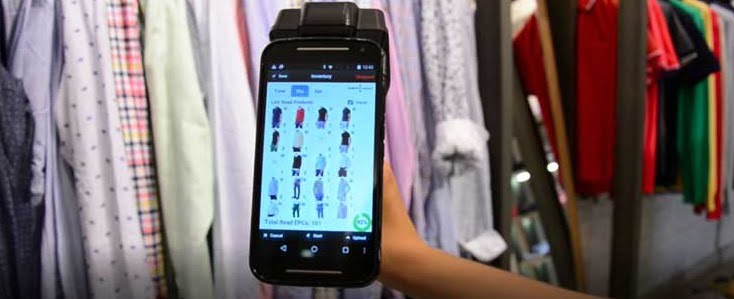
With the emergence of e-commerce, omnichannel fulfillment & next-day delivery, real-time inventory visibility (item- level) across the supply chain has become an imperative for global retailers & brand owners. One of the enablers for item-level visibility is UHF-Passive RFID (radio frequency identification): the new generation Auto-ID technology that provides a way for creating a digital identity for physical products & uses radio or wireless communication to uniquely identify and transmit data (accurately). Advantages (RFID over barcode) include unique identification (serialization), bulk -scanning (item, case or pallets), automation (receiving or shipping) & authentication (returns).
Key factors to consider when deploying an RFID system for Retail supply chain:
- RFID tags (inlay/ labels): A wide variety of RFID inlays & tags are available in the market. Ensure IC/ chip is EPC-compliant (Gen2 global standard) & ARC-lab certified (tested/ proven for Retail use). Further, depending on your products & packaging, you may have to pick more than one design (antenna) or form-factor (label, ticket or fabric) to ensure 99.9% tag readability (item-level) & accuracy. When & where to commission RFID tags (source tagging at the factory or DC/warehouse on receipt) is important too.
- RFID hardware (readers): From warehouse (fixed readers, portals, tunnels) to retail store devices (handheld, POS readers, anti-theft gates), make sure your hardware selection is brand or vendor-agnostic when it comes to your overall RFID infrastructure. This will enable the selection of high-performance products (99.9% readability) & right-functionality (speed, connectivity) suited to your process & environment. Further, hardware compliance (local regulations/ certifications), ease-of-use (user training), after-sales support (country-wide) & vendor expertise (domain) is vital in long-term.
- RFID software platform (Inventory): The least discussed but the most crucial piece in your RFID deployment is decided to develop your own application or choose a global RFID inventory-management software suite that will manage RFID tag commissioning, host real-time inventory data, drive mobile devices & tasks, integrate with ERP, SCM applications & provide dashboard, analytics & reports for decision-making. In terms of cost & scalability, pick one that suits your budget & needs, OPEX (pay per use) or CAPEX (turnkey) as per your IT policy.
Next, make sure to test your RFID use-case thoroughly. Poof-of-concept (pilot) in select DC or store locations will help you to understand technology (benefits, limitations), evaluate all above options (measure performance) & document results (objectives) A well-defined & executed RFID pilot project will further help you to progressively review (simplify) your business process & figure out the best way to solve specific problems (inventory stock-out or faster checkouts).
Lastly, please do quickly scale-up for enterprise-wide roll out to achieve ultimate goal of 99.9% item-level visibility (inventory accuracy), higher speed (of operations) & revenues (sales conversion), It’s imperative that RFID becomes a standard tool for product identification & data capture in your supply chain just as barcode is today.
Major retailers are attributing cost savings and increased sales to RFID technology (Source: Auburn research). RFID technology:
- Raises inventory accuracy from an average of 63% to 95%
- Reduces retail out-of-stocks by up to 50%
- Cuts cycle count times by 96%
Talk to our RFID experts to work out the right strategy & solution for your brand. Share your queries at sales@geipl.com, or call us at +91-124-403-6307/08, 7428100866, 1800 102 0170 (Toll-free).
Author: Shakti Jain
Date of Creation: 1st January 2020
